Lire sur le site de Soccer Nostalgia The Soccernostalgia Interview-Part 20
Lire la version en anglais. English version here
Cet article fait partie de la série Dialogue avec Soccer Nostalgia
Soccernostalgia : Michel Hidalgo a commencé la saison 1977/78 après une tournée sud-américaine relativement réussie. L’objectif était la qualification de novembre contre la Bulgarie qui façonnerait la saison. Quelle était l’ambiance de ce début de saison ?
Bruno Colombari : La pression commençait à monter. La victoire de la Bulgarie contre l’Irlande à Sofia, le 1er juin (2-1), arrangeait les Bleus dans la perspective du dernier match du groupe, qui serait décisif pour la qualification. Mais au moins l’équipe de France avait les cartes en mains, et semblait solide à domicile, ce qui était de bon augure puisque le match contre la Bulgarie aurait lieu à Paris. Et la physionomie du match aller, où les Bleus avaient dominé les Bulgares chez eux, incitait à l’optimisme.
La saison a commencé par un match amical contre l’équipe ouest-allemande du SV Hambourg de Kevin Keegan. La France s’est imposée (4-2) avec Platini inscrivant un triplé, mais la performance n’a pas été convaincante par moments. Que retenez-vous de ce match ?
C’était un bon résultat, qui confirmait l’excellente forme de Platini. Dommage que son triplé tête-gauche-droit, comme ceux qu’il inscrira contre la Belgique et la Yougoslavie sept ans plus tard à l’Euro, n’ait pas compté dans ses statistiques puisque le match n’était pas officiel. Mais Hambourg était la troisième meilleure équipe allemande de l’époque après le Bayern et Mönchengladbach, et Kevin Keegan, vainqueur de la Coupe d’Europe avec Liverpool en mai, allait recevoir le Ballon d’Or en décembre. Cette équipe de France s’appuyait sur cinq joueurs de Saint-Etienne. Il n’y avait que deux Nantais, pourtant champions de France en titre : le défenseur Maxime Bossis et l’avant-centre Eric Pécout, dont la première vraie sélection n’arrivera qu’en 1979.
En octobre, la France a accueilli l’Union soviétique dans le cadre d’un match préparatoire au choc contre la Bulgarie. La France a eu du mal en première mi-temps, avant de s’améliorer en seconde période. Il y avait beaucoup de critiques de cette performance. Qu’en pensez-vous ?
L’équipe d’URSS en 1977 était en phase de transition. Ce n’était plus la grande équipe des années 60 qui avait brillé en Coupe du monde et remporté le premier championnat d’Europe, en jouant deux finales en 1964 et 1972. Et ce n’est pas encore la redoutable équipe des années 1982-1988, qui atteindra la finale de l’Euro à Munich. Mais elle est plus forte que la Bulgarie, et il faut un peu de chance aux Bleus pour ne pas perdre puisque Kolotov a trouvé la barre d’André Rey, comme Platini d’ailleurs sur coup franc. C’est d’ailleurs le deuxième 0-0 de l’ère Hidalgo, le premier à domicile.
Avant le match contre la Bulgarie, le président de Saint-Etienne, Roger Rocher, a critiqué Hidalgo pour la tournée sud-américaine de l’été précédent. Il sentait que ses joueurs étaient fatigués et sur-sollicités par l’équipe nationale. Comment cette querelle a-t-elle été décrite dans la presse à l’époque ?
L’équipe nationale ne jouait pas souvent dans les années 1970 : six matchs en 1974, 1975 et 1976, sept matchs en 1977… C’est moitié moins qu’aujourd’hui, où les internationaux finissent la saison avec 70 matchs dans les jambes ! Les compétitions européennes étaient plus courtes aussi, avec huit matchs à jouer avant la finale contre douze aujourd’hui. Mais Robert Herbin, l’entraîneur de Saint-Etienne, faisait peu tourner son effectif.
C’est toujours la même histoire de la concurrence entre les clubs et les sélections, même si aujourd’hui les paramètres sont différents : les principaux clubs européens ont des internationaux de sept ou huit nationalités différentes, et les calendriers ont été aménagés pour réserver des dates aux équipes nationales.
Pouvez-vous décrire le match décisif de qualification pour la Coupe du Monde le 16 novembre au Parc des Princes contre la Bulgarie ?
C’est un match qui se joue avec une extrême tension, semblable à une rencontre de Coupe d’Europe avec un enjeu énorme. L’équipe de France a tellement déçu depuis quinze ans dans ces moments-là que beaucoup craignent un nouvel échec, puisqu’un match nul qualifierait la Bulgarie, qui en a obtenu un à Dublin en octobre (0-0) et qui se verrait bien refaire pareil. Hidalgo sait qu’il va falloir prendre des risques pour faire basculer le match si possible avant la mi-temps. Et il en prend, avec Jean-Marc Guillou au milieu de terrain et Dominique Rocheteau en attaque. Il fait bien puisque c’est lui qui marque un but opportuniste sur un ballon remis de la tête par Trésor sur corner. Les Bleus ont une première balle de match par Platini, qui trouve encore la barre. Il marque le deuxième but après l’heure de jeu d’un tir de 25 mètres après une action construite côté gauche par Bossis et Six.
A 2-0, le match est plié, mais Six manque coup sur coup deux belles occasions, et les Bulgares finissent par réduire le score à cinq minutes de la fin, laissant planer la menace d’une égalisation fatale. Mais Emil Kostanidov n’a que dix ans et n’est évidemment pas encore international. Les Bleus finissent le travail par Christian Dalger et l’arbitre de la rencontre, Charles Corver (celui de Séville en 1982) siffle la fin du match.
L’image d’Hidalgo pleurant sur les épaules de ses joueurs à la fin du match est l’une des images indélébiles de l’ère Hidalgo. Décrivez l’ambiance après ?
C’est le match fondateur de Michel Hidalgo, celui qui envoie l’équipe de France en Coupe du monde pour la septième fois de son histoire. Il réussit là où Georges Boulogne et Stefan Kovacs avaient échoué. C’est un immense soulagement pour les joueurs, pour les supporters, pour les médias et les publicitaires aussi, qui commencent à sentir que le football français peut rapporter de l’argent. Cette génération-là, celle de Platini, Bossis, Six ou Rocheteau, n’a pas connu les échecs de ses prédécesseurs et n’a aucun complexe d’infériorité. Un peu comme Varane, Pogba ou Griezmann, arrivés en 2013-2014 sans le poids de Knysna. D’ailleurs, le France-Ukraine 2013 ressemble un peu au France-Bulgarie 1977. En cas d’échec, Michel Hidalgo aurait sans doute démissionné, tout comme Didier Deschamps 36 ans plus tard.
Le premier match amical préparatoire a eu lieu contre l’Italie à Naples en février, face leurs prochains adversaires en Coupe du monde. On se souvient des deux coups francs de Platini contre Dino Zoff. Quels sont vos souvenirs de ce match spécial ?
Je me souviens l’avoir vu chez la grand-mère d’un ami du collège car mes parents n’avaient pas la télévision. C’était un mercredi après-midi, et à la mi-temps on était sorti dans le jardin pour refaire les actions avec une petite balle. Le match était mal parti avec deux buts de Graziani dans la première demi-heure, ce qui était inquiétant à quatre mois de la Coupe du monde. Les Italiens semblaient beaucoup plus forts, mais en deuxième mi-temps, tout change : les Bleus se montrent enfin, Bathenay marque de la tête et Platini égalise donc sur coup franc, après qu’une première tentative réussie ait été annulée par l’arbitre.
Déjà surveillé par l’Inter, Platini est demandé partout en Italie, à tel point qu’on se demande encore comment il a pu attendre encore quatre ans avant de franchir les Alpes. Dommage qu’il ne soit pas parti à Saint-Etienne en 1978, et à la Juventus en 1981 : ça aurait probablement tout changé à la Coupe du monde 1982.
Le prochain match amical était en mars contre le Portugal au Parc. Ce fut une performance décevante car la France manquait de nombreux titulaires. Qu’est-ce qui était important dans ce match ?
Il manquait Bathenay, Platini, Trésor, Rouyer… C’était un match amical de préparation contre une équipe qui n’était pas qualifiée pour la Coupe du monde et qui vivait difficilement l’après Eusebio. Le point important du match, et qui aurait pu avoir des conséquences pour la suite, c’est le rappel par Michel Hidalgo de Omar Sahnoun et d’Alain Giresse au milieu de terrain comme il l’avait tenté au printemps 1977. A trois mois de la Coupe du monde, ces deux-là pouvaient espérer en être, mais ce ne sera pas le cas. Et c’est dommage, car je suis convaincu qu’ils auraient apporté autre chose que Henri Michel, Jean-Marc Guillou, Claude Papi ou Jean Petit.
La meilleure performance de la phase de préparation a été la victoire sur le Brésil au Parc en avril. Quels sont vos souvenirs de ce match ?
C’était la toute première des Bleus contre les triples champions du monde, même s’ils n’avaient pas été ridicules en 1963 (2-3) et surtout l’année précédente au Maracana (2-2). Ce n’est plus le Brésil de Pelé, Gerson, Tostao et Jaïrzinho, mais il reste Zico et Rivelino, et ce n’est pas rien. Un peu comme contre la RFA en 1977, l’équipe de France est dominée par moments mais tient le choc en défense, est bien organisée au milieu avec Henri Michel, Jean-Marc Guillou et Michel Platini, même si l’attaque est un peu légère (Baronchelli, Berdoll et Amisse). Platini marque un but à quatre minutes de la fin, ce qui ne laisse plus beaucoup de temps aux Brésiliens pour réagir. Deux victoires à domicile contre la RFA et le Brésil, trois nuls à l’extérieur en Argentine, au Brésil et en Italie : on commençait à qualifier l’équipe de France de championne du monde des matchs amicaux. Aujourd’hui, ce serait ironique, mais à cette époque c’était plutôt flatteur.
En mai, la France a affronté deux adversaires de continents différents. Ils ont d’abord affronté l’Iran à Toulouse. La performance de la France a été critiquée. Ensuite, ils ont battu la Tunisie dans une autre performance difficile. Que retenez-vous de ces matchs ?
Ce sont les premiers matchs contre une sélection asiatique (l’Iran, plus jamais rencontrée depuis) et une sélection africaine, la Tunisie, même si en 1972 la France avait joué contre une équipe d’Afrique lors de la Coupe de l’Indépendance au Brésil. Ces deux adversaires-là, a priori prenables (mais tous deux qualifiés pour l’Argentine, il faut le rappeler) étaient moins excitants que l’Italie et le Brésil.
Ces deux matchs ont été précédés par la publication d’une liste de 40 joueurs, obligatoire pour la FIFA, parmi lesquels les 22 seraient retenus. C’est donc à ça que servent les deux amicaux contre l’Iran et la Tunisie. Dans ces 40, il y a six joueurs qui ne seront jamais internationaux A (les défenseurs Cazes, Bacconnier, Guesdon et Zambelli, le milieu Lacuesta et l’attaquant Florès).
Le fait que ces deux matchs n’aient pas été convaincant coûtera cher à Sahnoun, Kéruzoré et Gemmrich, tous alignés contre l’Iran, alors que les 15 joueurs contre la Tunisie seront tous retenus.
Il y a eu beaucoup de discussions politiques avant cette Coupe du monde car l’Argentine est gouvernée par une junte militaire dirigée par le général Videla. Dans de nombreux pays européens, dont la France, des appels au boycott de la Coupe du monde ont été lancés. Que pouvez-vous dire à ce sujet ?
Les joueurs ont été très discrets sur la question, hormis Dominique Rocheteau, sans doute le plus politisé à l’époque (à gauche). Rien à voir avec Johann Cruyff, qui refusera d’y aller, mais il dira en 2008 qu’il avait été victime d’une tentative d’enlèvement fin 1977 à Barcelone. En France, les appels au boycott venaient d’intellectuels, comme Jean-Paul Sartre, Louis Aragon ou Marek Halter. Mais l’opinion publique était majoritairement favorable à la participation de l’équipe de France, et même les partis de gauche, communiste et socialiste, parlaient d’y aller pour manifester leur solidarité avec le peuple argentin. Les élections législatives de mars 1978 approchaient, la gauche pouvait les gagner et l’enjeu électoral était plus important que les valeurs morales. Michel Hidalgo, lui, était favorable à y aller, en rappelant que la France jouait régulièrement dans les pays communistes malgré l’existence du Mur de Berlin.
En 2022, les appels à boycotter la Coupe du monde au Qatar n’ont pas plus de réussite, et les footballeurs ne sont toujours pas mobilisés.
Le 23 mai, Michel Hidalgo et sa femme ont été victimes d’une tentative d’enlèvement alors qu’ils conduisaient de Saint Savin à Bordeaux. Que sait-on de cet incident ?
Il semblerait que ce soit un commando d’extrême gauche favorable au boycott, justement, même si ce n’est pas prouvé. Michel Hidalgo a d’ailleurs fait preuve de beaucoup de sang froid en désarmant son agresseur et en le mettant en fuite. L’ambiance est lourde avant le départ en Argentine, et le moral de Michel Hidalgo est atteint. La pression autour de l’équipe est très importante et il a du mal à la gérer.
Y a-t-il eu des surprises ou des oublis notables dans le Final 22 sélectionné pour la Coupe du monde ?
J’en verrai au moins deux : Omar Sahnoun et Alain Giresse, qui auraient apporté au milieu de terrain une touche technique supérieure. Mais Michel Hidalgo a préféré s’appuyer sur l’expérience avec Henri Michel et Jean-Marc Guillou. Il a aussi emmené le Bastiais Claude Papi, qui sortait d’une saison très brillante avec Bastia, en atteignant la finale de la Coupe UEFA. Mais ce dernier n’a jamais vraiment eu le temps de s’intégrer. De même que le Monégasque Jean Petit, champion de France en 1978. De très bons joueurs de club, qui n’avaient sans doute pas la carrure pour jouer en sélection.
Avant le match contre l’Italie en Coupe du monde, il y avait une controverse concernant les bonus à payer par Adidas. Pouvez-vous nous éclairer là-dessus ?
Il s’agissait d’un contrat avec l’équipementier de l’équipe de France depuis 1972. A cette époque, les chaussures duraient plusieurs mois, et les joueurs devaient mettre de la peinture blanche sur les trois bandes pour qu’elles soient bien visibles. Chaque joueur recevait à l’époque 5000 francs de primes pour ça (environ 760 euros, ou 840 dollars). Avant la Coupe du monde, ils en réclamaient 7500. Comme ils n’avaient pas obtenu satisfaction, certains avaient décidé de passer du cirage noir avant le match contre l’Italie pour masquer les bandes. Mais ils n’étaient pas unanimes sur ce point.
Le match lui-même contre l’Italie a été décevant. La défense française a été critiquée pour de nombreuses erreurs. Que pensez-vous de cette prestation ?
Les Bleus ont marqué un but sur leur première attaque, après trente secondes de jeu, et ils n’ont pas su quoi faire de cette avance. C’est vraiment dommage, car la Coupe du monde ne pouvait pas mieux commencer. Mais les Italiens avaient retenu la leçon du match de février, et Tardelli s’occupait personnellement de Platini. L’équipe de France a manqué de fraîcheur sur ce match, et a attendu d’être menée au score pour réagir, mais trop tard. Elle a été naïve face à une équipe qui la craignait et qui avait plus d’expérience qu’elle. Hidalgo a sans doute aussi fait de mauvais choix en écartant Bathenay et Rocheteau au profit de Guillou et Dalger.
La performance contre l’Argentine était meilleure mais la France a encore perdu et a été éliminée. Il y a eu une controverse concernant le penalty accordé aux hôtes. Que pensez-vous de ce match ?
C’est de loin le meilleur match des Bleus dans cette Coupe du monde. Avec un peu plus d’expérience et d’efficacité devant, ils pouvaient le gagner et jouer la qualification lors du troisième match. Le milieu de terrain Bathenay-Michel-Platini a largement dominé les Argentins. Mais plus que le pénalty sifflé contre Trésor pour une main a priori involontaire sur un tacle glissé, une faute qui serait sanctionnée sans faire de vagues aujourd’hui, ce sont deux faits de jeu qui ont coûté très cher à l’équipe de France : la blessure du gardien Jean-Paul Bertrand-Demanes, car un changement de joueur à ce poste dans un match aussi intense n’est jamais une bonne chose, et l’énorme occasion manquée par Didier Six qui s’est présenté devant Fillol et n’a pas cadré son tir, alors qu’il y avait 1-1. Un nul n’aurait sans doute pas suffi pour se qualifier, mais il y avait la place pour faire mieux. L’Argentine s’en sortait très bien, comme déjà au match précédent où elle avait souffert contre la Hongrie.
La presse a fait état de nombreuses polémiques lors de la Coupe du monde. Les joueurs ont été critiqués pour le problème des bonus, il y a eu des rapports de clans et de joueurs se battant et des histoires sur l’équipe contre Didier Six. Le Groupe a confronté la presse à propos de ces histoires. Que retenez-vous de ces rapports ?
C’est la première phase finale de l’équipe de France depuis douze ans, donc personne dans le groupe n’avait l’expérience de ce type de rassemblement, loin à l’étranger. Mais ce n’est pas la première fois ni la dernière que ce genre de choses arrivent. Il y en aura encore en 1982, sans même parler de 2010 évidemment. Ce n’est pas là-dessus que l’équipe a été éliminée. Mais c’est toujours pareil : de telles histoires prennent de l’importance parce que l’équipe à déçu. Je suis sûr que d’autres seraient sorties en 1998 si la France avait été éliminée par le Paraguay en huitième, ou en 2006 si elle n’avait pas battu le Togo au premier tour. A l’inverse, personne n’aurait parlé du Casino de l’hôtel de Séoul en 2002 si Trezeguet et Henry n’avaient pas tiré sur les poteaux contre le Sénégal.
Le troisième et dernier match contre la Hongrie a de nouveau été controversé. La France et la Hongrie se sont présentées toutes les deux avec des maillots blancs. Pouvez-vous décrire cet incident ?
Tout est venu d’un fax tardif de la FIFA précisant que la Hongrie jouerait en blanc (et pas en rouge comme prévu initialement), et que l’équipe de France devait donc se présenter en bleu. L’intendant de l’équipe de France n’avait pas lu ce fax, et l’essentiel des équipements étaient déjà emballés pour le retour en France. L’équipe n’avait donc que ses tenues blanches. Certains ont affirmé que la Hongrie avait ses maillots rouges et aurait pu les utiliser, mais n’a pas voulu le faire. Toujours est-il que le coup d’envoi a été reporté de trois quarts d’heure, le temps que le staff français se procure un jeu de maillots de rechange. Ils n’ont trouvé que ceux du petit club local de Kimberley FC, qui étaient d’ailleurs rayés vert et blanc, donc peu contrastés par rapport au maillot hongrois. Et ils n’étaient numérotés que de 1 à 16, alors que les Français avaient des shorts numérotés de 1 à 22. Certains joueurs français ont donc évolué avec un maillot ne correspondant pas au numéro de leur short.
Ce match a également lancé la tradition d’aligner des joueurs qui n’avaient pas participé à un tournoi. Que pensez-vous de cette tradition ?
C’est une bonne chose, pour deux raisons : elle permet de garder l’ensemble du groupe mobilisé, et, si l’équipe est déjà qualifiée avant le troisième match, de laisser souffler les titulaires en les préservant d’une blessure ou d’une suspension. Les cas les plus connus sont 1998, 2000, 2016 et 2018, où les Bleus avaient gagné les deux premiers matchs et où la rotation a été importante. A chaque fois, ils ont atteint la finale. Ça n’a pas marché par contre en 2014. Et le plus souvent, ce troisième match n’est pas beau à voir.
Quel bilan faites-vous de la Coupe du Monde et de la saison en général ?
L’élimination au premier tour est évidemment une déception, car l’équipe de France n’a pas été surclassée par l’Italie et a fait au moins jeu égal avec l’Argentine. Mais elle est tombée dans un groupe trop relevé pour elle. Et n’oublions pas qu’une Coupe du monde à 16, c’est l’équivalent d’un huitième de finale aujourd’hui. En 1978, il n’y avait pas l’Uruguay, ni l’Angleterre, ni l’URSS, ni la Belgique, ni la Yougoslavie ou la Tchécoslovaquie, autant d’équipes qui dominaient les Bleus les années précédentes. En se qualifiant pour l’Argentine, la France avait fait mieux qu’elles.
Pour autant, cette deuxième saison complète de l’ère Hidalgo est quand même très satisfaisante avec la victoire décisive contre la Bulgarie en novembre, le nul en Italie en février et le premier match gagné face au Brésil en avril. Elle marque aussi la fin de la première partie de la période Hidalgo, avant trois années beaucoup plus compliquées sur lesquelles nous reviendront bientôt.

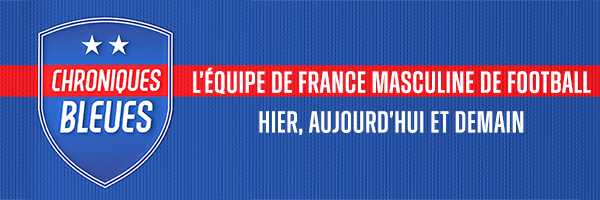

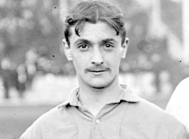
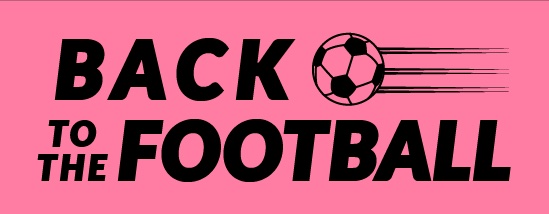

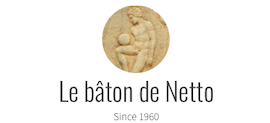

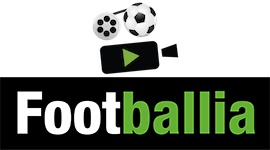
Vos commentaires
# Le 15 avril 2022 à 17:26, par Richard Coudrais En réponse à : Dialogue avec Soccer Nostalgia : Michel Hidalgo, saison 3 (1977-1978)
Que de souvenirs !
Petite précision : En mai 1978, Michel Hidalgo avait communiqué sa liste des 22 six jours avant le match contre la Tunisie, raison pour laquelle il n’y avait que des « tous retenus » le 19 à Villeneuve d’Ascq.